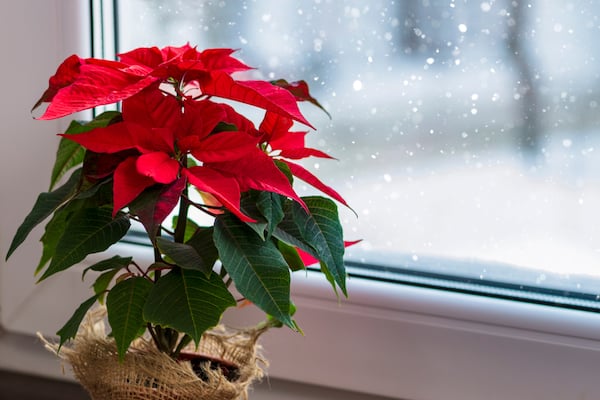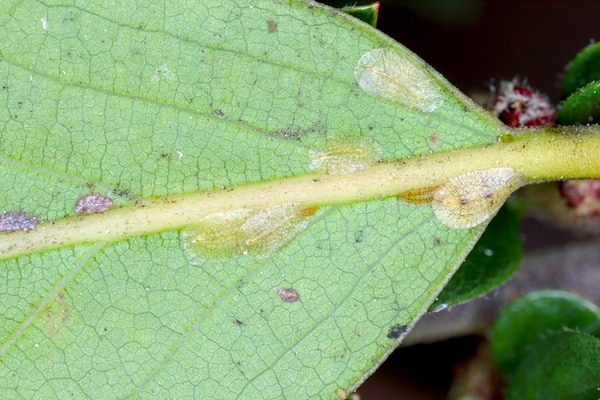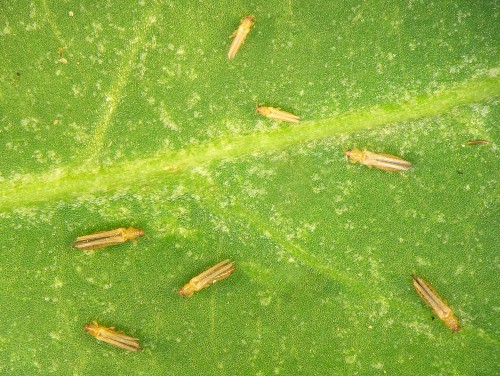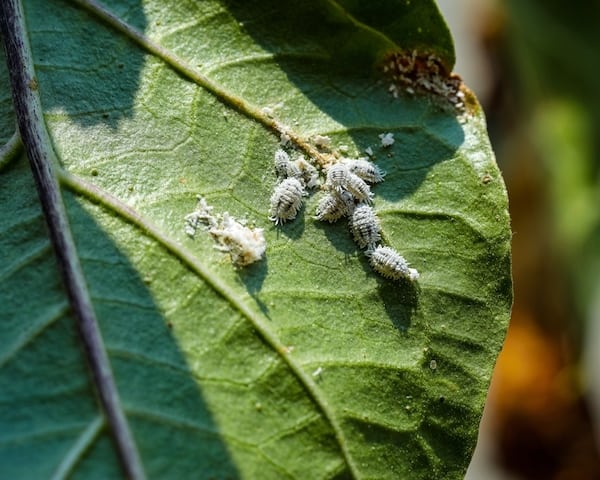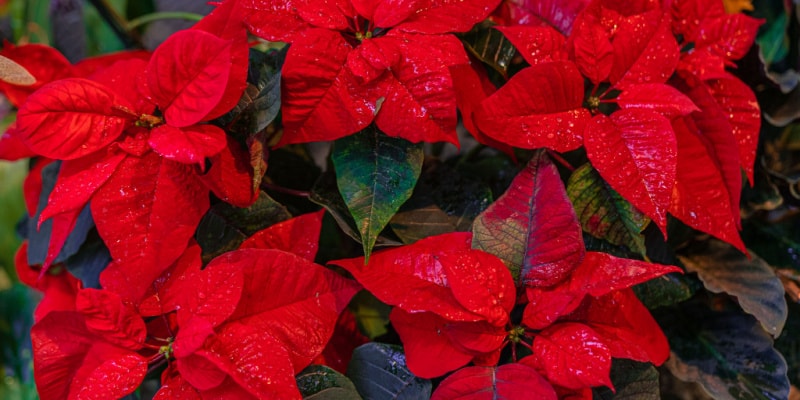
How to revive a dying poinsettia plant?
Our site is reader supported, this means we may earn a small commission from Amazon and other affiliates when you buy through links on our site.
First of all, don’t be too sure that you have a dying poinsettia plant on your hands. Pests, diseases and environmental conditions can all contribute to a plant that looks like it’s on its last legs. Take a close look at your poinsettia to determine what’s causing the problems of yellow leaves that may be wilting and falling off or soft and squishy stems. This guide discusses how to fix many of these issues and revive your ‘dying’ poinsettia plant to restore it to health.
One of the most common reasons for a poinsettia dying is because of environmental causes, so I will start with these first before moving on to the less likely pests and diseases.
Environmental causes
If your poinsettia looks like it has had its time, it may be because of something that you’re doing. Here’s how to revive it.
Over- and under-watering
The most common environmental cause of a poinsettia that looks like its dying is that it’s had too much or too little water. The general rule is to water the plant when the top surface of the soil is dry. Too much water can lead to root rot and the lower leaves turning yellow. Too little water also results in yellow leaves. It’s up to you to work out which watering problem you have and to adjust your watering frequency. What I will say is its easier to revive a poinsettia that has been too dry than one that has been overwatered to an extent that it’s literally drowned and suffered from root rot.
Too little or too much sunlight
Poinsettias need at least six hours of bright but not direct sunlight a day. Not enough sunlight can result in a plant that looks weak because it can’t generate enough energy to maintain the foliage and flowers. Too much direct sunlight can scorch the leaves leaving them with brown spots. Check where you’ve placed your poinsettia and move it to a more suitable sunlight location if needed.
Too warm or too cool
Poinsettias like a minimum temperature of around 13˚C to 16˚C. But they don’t like to be around drying heat sources such as a radiator or an open fire. Alternatively, if your plant is drooping it may be too cold overnight or the environment around it may be too dry.
Move the plant to somewhere that’s more suitable or mist around it with a water spray. But don’t allow excess water to remain on the leaves and bracts as this creates a welcoming humid environment for disease and pests including mildew.
One last point worth mentioning is that poinsettia often suffers in supermarkets and garden centres if they have been kept in cold areas or near a draft. I have seen supermarkets place them on top of open-fronted fridges in the past and then they wonder why they drop there leaves. Being exposed to the cold while walking to the car can also cause poinsettias to drop their leaves. With this in mind, if you buy a new one, choose one that has been at the garden centre for a few days and looks healthy and protect it with a bag when outside.
Diseases
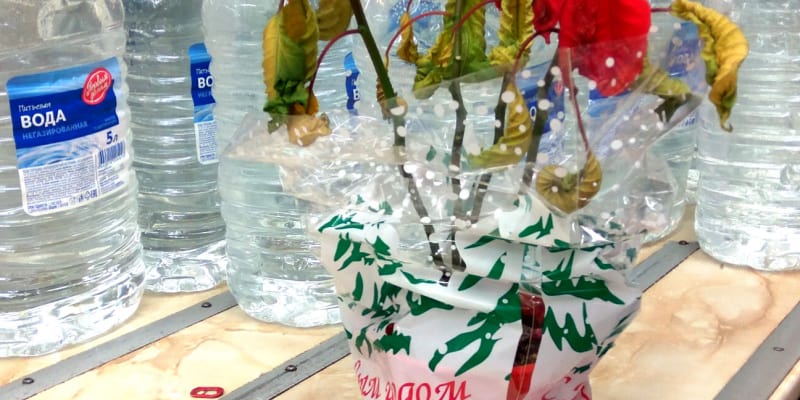
Diseases are often easier to find on your plant than tiny insects so start there. Once you’ve identified the disease, turn to my guide Poinsettia pests and diseases for information on how to revive your dying poinsettia. Below is a quick guide on the most common pests and diseases to look for.
Powdery mildew
Look for a white powdery substance on the top sides of the leaves. This is powdery mildew which you may also find on the buds, flowers and stems of your plant, as well as the undersides of the leaves. If you catch the disease early, the patches of the white powder are separate from each other, and you can still see parts of the leaves. Later on in the disease’s run, the patches join together and completely cover the leaves.
Sooty black mould
This fungal infection looks the opposite to the white mildew. It’s a black soot-like powder that grows on honeydew. This is a sticky clear substance left behind by the insects that feed on your plant’s leaves (see below for more details). This mould causes the leaves to look unsightly and reduces the amount of sunlight that reaches them.
Root rot
Unfortunately, root rot is a disease that starts under the soil in the root. So when you notice its above- ground symptoms – yellowing and wilting leaves, soft stems – it’s already too late to do anything about the problem. This is really a dying plant, and you can’t do anything about it. You need to destroy the plant.
Pests
The pests that may plague poinsettias are usually small in scale and quite difficult to find. But they can be dealt with and your poinsettia can revive and go on to live a healthy life for the winter holiday season.
Once you’ve identified the pests that are harming your plant, go to Poinsettia pests and diseases to watch out for to find out what to do about them to revive your poinsettia.
Scale insects
If you notice a clear but sticky substance on your plant, that’s honeydew. This is a substance excreted by insects that suck the sap from the poinsettia leaves. Your leaves are probably yellow and wilting and even falling off the plant. And the most likely culprits are scale insects.
Look closely at the underside of the leaves and you may see clumps of small insects, about 6mm long. They have a soft body and a waxy shell that gives them some protection from insecticide sprays.
Thrips
Thrips are even tinier insects that feed on your plant’s sap. It’s difficult to see them unless they hang out in large groups. So look for the damage they do. If it seems like your poinsettia is dying because of silver flecks all over the leaves, that’s because of thrips.
Mealybugs
Mealybugs are another insect that leave behind honeydew after they’ve feasted on the sap in your poinsettia. So if your leaves are falling off, they may be the cause. These insects are difficult to find as they live in out of the way places including under the outer part of the stem and in the leaf sheafs.
Mealybugs multiply quickly so a small infestation of just a few can rapidly turn into a severe and dense attack. Unfortunately, in this case, you cannot revive your dying poinsettia plant and you need to destroy it.
